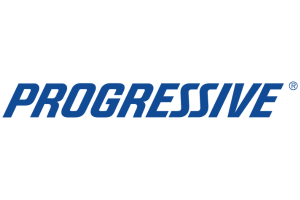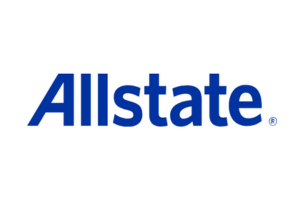What is the average cost of health insurance in Illinois?
Are you wondering about the average cost of health insurance in Illinois? This article provides insights into the prevailing rates, helping you make informed decisions about your healthcare coverage. Discover the essential factors influencing premiums and find the best options for your needs.
Read more Secured with SHA-256 Encryption






Find the Lowest Car Insurance Rates Today
Quote’s drivers have found rates as low as $42/month in the last few days!




Table of Contents
Table of Contents


Insurance Content Managing Editor
Daniel S. Young began his professional career as chief editor of The Chanticleer, a Jacksonville State University newspaper. He also contributed to The Anniston Star, a local newspaper in Alabama. Daniel holds a BA in Communication and is pursuing an MA in Journalism & Media Studies at the University of Alabama. With a strong desire to help others protect their investments, Daniel has writt...
Daniel S. Young


Licensed Insurance Producer
Dani Best has been a licensed insurance producer for nearly 10 years. Dani began her insurance career in a sales role with State Farm in 2014. During her time in sales, she graduated with her Bachelors in Psychology from Capella University and is currently earning her Masters in Marriage and Family Therapy. Since 2014, Dani has held and maintains licenses in Life, Disability, Property, and Casualt...
Dani Best
Updated September 2024
In a state as diverse as Illinois, the average cost of health insurance can vary based on various factors. Understanding these factors is essential to make informed decisions when it comes to purchasing health insurance. This article will delve into the average cost of health insurance in Illinois, factors that influence these costs, and ways to lower them. Let’s explore the intricacies of health insurance costs in Illinois.
Understanding Health Insurance Costs
When it comes to health insurance, understanding the factors that contribute to its cost is essential. Insurance providers take into account various elements to determine the premiums individuals have to pay. These factors include age, pre-existing medical conditions, family size, and coverage options. Additionally, the type of plan and the level of coverage can also have an impact on the cost. To better comprehend the average cost of health insurance in Illinois, it is important to delve into the role of deductibles and premiums.
What Factors into the Cost of Health Insurance?
As mentioned earlier, insurance providers consider several factors when calculating health insurance premiums. Age is a significant factor, as older individuals tend to have higher healthcare needs and are more prone to certain medical conditions. Pre-existing medical conditions, such as diabetes or heart disease, can also affect the cost of insurance as they may require more frequent medical attention and treatment.
Family size is another element that plays a role in determining health insurance costs. Insurance providers take into account the number of individuals covered under the policy, as larger families may require more extensive coverage.
Furthermore, the coverage options chosen by individuals can impact the cost of health insurance. Different plans offer varying levels of coverage, such as basic coverage for essential healthcare services or comprehensive coverage that includes additional benefits like dental and vision care. The more comprehensive the coverage, the higher the premium is likely to be.
Lastly, the type of plan selected can also affect the cost of health insurance. Preferred Provider Organization (PPO) plans, for example, offer a wider network of healthcare providers but tend to have higher premiums. Health Maintenance Organization (HMO) plans, on the other hand, may have lower premiums but require individuals to seek care from a specific network of providers.
The Role of Deductibles and Premiums
Understanding the role of deductibles and premiums is crucial in comprehending the overall cost of health insurance. Deductibles refer to the amount individuals must pay out of pocket before their insurance coverage kicks in. In other words, it is the initial cost individuals have to bear before the insurance company starts sharing the expenses.
Generally, insurance policies with lower deductibles tend to have higher premiums. This is because individuals with lower deductibles can start utilizing their insurance coverage sooner and are likely to have lower out-of-pocket expenses for medical services. On the other hand, policies with higher deductibles have lower premiums but require individuals to pay more before their coverage begins.
Premiums, on the other hand, are the monthly or yearly payments individuals make to maintain their health insurance coverage. These payments contribute to the overall cost of health insurance. Individuals with higher premiums typically have lower out-of-pocket expenses, as the insurance company covers a larger portion of the medical costs.
It is important to note that deductibles and premiums work together to determine the overall cost of health insurance in Illinois. While lower deductibles may result in higher premiums, they can provide individuals with more immediate access to healthcare services. On the other hand, higher deductibles may lead to lower premiums but individuals may have to pay more out of pocket before their coverage begins.
In conclusion, understanding the factors that contribute to the cost of health insurance is crucial in making informed decisions about coverage options. Age, pre-existing medical conditions, family size, and the type of plan all play a role in determining premiums. Additionally, deductibles and premiums are significant factors that impact the overall cost of health insurance. By considering these elements, individuals can better navigate the complex world of health insurance and find coverage that suits their needs and budget.
Free Health Insurance Comparison
Compare Quotes From Top Companies and Save
Secured with SHA-256 Encryption
The Average Cost of Health Insurance in Illinois
When examining the average cost of health insurance in Illinois, age group breakdowns offer valuable insights. For instance, younger individuals may benefit from lower premiums and potentially more affordable coverage due to being less prone to health issues. However, older individuals may face higher premiums due to increased health risks. Understanding how age impacts health insurance costs can aid in navigating the market and choosing the right plan.
It is important to note that age is not the sole determining factor in health insurance costs. Other factors such as pre-existing conditions, lifestyle choices, and the specific plan chosen can also influence the overall cost. For example, individuals who smoke or have chronic conditions may face higher premiums regardless of their age.
When considering the cost of health insurance in Illinois, it is also crucial to take into account the breakdown by family size. The size of an individual’s family can significantly impact health insurance costs. Larger families may require more extensive coverage and, therefore, have higher premiums. Additionally, plans that include dependents may have higher costs.
It is worth mentioning that the Affordable Care Act (ACA) has made it easier for families to obtain health insurance coverage. Under the ACA, children can remain on their parents’ insurance until the age of 26, which can help alleviate some of the financial burden for young adults. Furthermore, the ACA has implemented subsidies and tax credits to make health insurance more affordable for low-income individuals and families.
When determining the average cost of health insurance in Illinois, it is essential to consider all these factors and weigh them against individual needs and budget constraints. Consulting with insurance providers and utilizing online resources can help individuals make informed decisions and find the most suitable plan.
Comparing Health Insurance Costs in Illinois to Other States
Cost Comparison with Neighboring States
When it comes to comparing health insurance costs, looking at neighboring states can provide valuable insights for Illinois residents. Factors such as population density, healthcare infrastructure, and state-specific regulations can all influence how Illinois fares in terms of affordability.
Illinois, with its diverse population and bustling cities, faces unique challenges when it comes to healthcare costs. Neighboring states like Wisconsin, Indiana, and Missouri may have different healthcare systems and regulations in place, which can impact the overall cost of health insurance. By examining the cost comparison with these neighboring states, individuals can gain a better understanding of whether they are getting the best value for their coverage.
For example, Wisconsin, known for its strong healthcare infrastructure and high-quality healthcare facilities, may have higher health insurance costs compared to Illinois. This could be due to a higher demand for healthcare services, leading to increased prices. On the other hand, Indiana, with its lower population density and different healthcare regulations, may offer more affordable health insurance options.
Understanding these comparisons can aid individuals in assessing the average cost of health insurance in Illinois. It allows them to make informed decisions about their coverage and explore options in neighboring states if it proves to be more cost-effective.
Cost Comparison with the National Average
Examining the average cost of health insurance in Illinois in comparison to the national average provides individuals with a broader context. It allows them to see how the state’s healthcare system aligns with the rest of the country.
Illinois, being a populous state with diverse healthcare needs, may have different cost structures compared to the national average. Factors such as the cost of living, the prevalence of chronic diseases, and the availability of healthcare providers can all contribute to these differences.
By comparing the average cost of health insurance in Illinois to the national average, individuals searching for health insurance options can make more informed decisions about their coverage. They can evaluate whether the costs in Illinois are in line with the rest of the country or if there are more affordable options available elsewhere.
It is important to note that the cost of health insurance can vary significantly depending on factors such as age, pre-existing conditions, and the level of coverage desired. Therefore, while these comparisons provide valuable insights, individuals should also consider their own specific circumstances when evaluating health insurance costs.
In conclusion, comparing health insurance costs in Illinois to neighboring states and the national average can help individuals gain a better understanding of the affordability of coverage. It allows them to assess whether they are getting the best value for their money and make informed decisions about their healthcare needs.
Ways to Lower Your Health Insurance Costs in Illinois
Government Assistance Programs
Illinois offers government assistance programs that can help individuals lower their health insurance costs. Programs such as Medicaid and the Children’s Health Insurance Program (CHIP) provide affordable or free health insurance coverage to eligible individuals and families. Exploring these options can make healthcare more accessible and reduce financial burdens.
Medicaid is a joint federal and state program that provides health coverage to low-income individuals and families. In Illinois, it is known as the Medical Assistance Program (MAP). Eligibility for Medicaid is based on income and household size. The program covers a wide range of medical services, including doctor visits, hospital stays, prescription drugs, and preventive care.
The Children’s Health Insurance Program (CHIP) is designed to provide health coverage to children in low-income families who do not qualify for Medicaid. In Illinois, the program is called All Kids. All Kids offers comprehensive coverage, including doctor visits, hospital stays, dental and vision care, and prescription medications.
Applying for these government assistance programs is relatively easy. Individuals can visit the Illinois Department of Healthcare and Family Services website to learn more about eligibility criteria and how to apply. The application process typically involves providing proof of income, residency, and other relevant documentation.
Shopping for the Best Insurance Plan
One effective way to lower health insurance costs in Illinois is by shopping for the best plan. Comparing various insurance providers and their offerings allows individuals to find the most suitable coverage at the most competitive price. Websites and resources that specialize in health insurance can aid in this search. Evaluating different plans based on deductibles, premiums, and coverage will empower individuals to make cost-effective decisions.
When shopping for health insurance, it’s essential to consider factors such as the network of doctors and hospitals, prescription drug coverage, and out-of-pocket costs. Different insurance plans may have varying levels of coverage and cost-sharing requirements. Some plans may have lower premiums but higher deductibles, while others may have higher premiums but lower out-of-pocket costs.
It’s also worth exploring options such as Health Savings Accounts (HSAs) and Flexible Spending Accounts (FSAs). These accounts allow individuals to set aside pre-tax money to pay for qualified medical expenses. Contributions to HSAs are tax-deductible, and the funds can be used to cover a wide range of healthcare costs, including deductibles, copayments, and prescription medications.
Additionally, taking advantage of preventive services can help lower long-term healthcare costs. Many insurance plans offer free preventive services, such as vaccinations, screenings, and annual check-ups. By staying proactive about healthcare and addressing potential health issues early on, individuals can avoid more costly medical treatments down the line.
When shopping for health insurance plans, it’s important to carefully review the policy documents and understand the terms and conditions. Pay attention to any exclusions or limitations that may impact coverage. Consulting with a licensed insurance agent or broker can also provide valuable insights and guidance in selecting the right plan.
Free Health Insurance Comparison
Compare Quotes From Top Companies and Save
Secured with SHA-256 Encryption
The Future of Health Insurance Costs in Illinois
Predicted Trends for Health Insurance Costs
The landscape of health insurance costs is constantly evolving. Predicting future trends can provide valuable insights for individuals planning their healthcare expenses. Factors such as medical advancements, changes in legislation, and shifts in the healthcare industry can impact the average cost of health insurance in Illinois. Staying updated with these trends will help individuals anticipate potential changes and adapt their coverage accordingly.
How Policy Changes Could Impact Costs
Policies and regulations play a significant role in determining health insurance costs. Policy changes at the federal or state level can have far-reaching consequences. For example, changes in coverage requirements, tax incentives, or subsidies can impact the affordability of health insurance in Illinois. Understanding how policy changes can influence costs ensures individuals are aware of potential shifts that may affect their financial well-being.
In conclusion, the average cost of health insurance in Illinois is influenced by various factors, including age, family size, and coverage options. By understanding these factors, individuals can make informed decisions when purchasing health insurance. Additionally, comparing costs with neighboring states and the national average helps determine the value of insurance plans in Illinois. Lowering health insurance costs is possible through government assistance programs and diligent plan shopping. Lastly, staying informed about predicted trends and policy changes equips individuals to navigate future variations in health insurance costs. With this knowledge at hand, individuals can protect their health and financial well-being effectively.
Frequently Asked Questions
What factors determine the average cost of health insurance in Illinois?
The average cost of health insurance in Illinois is influenced by several factors, including the individual’s age, location, tobacco use, plan type, and coverage level.
How does age affect the cost of health insurance in Illinois?
Age plays a significant role in determining health insurance costs in Illinois. Generally, younger individuals tend to have lower premiums compared to older individuals.
Does location impact health insurance costs in Illinois?
Yes, location is a crucial factor in determining health insurance costs in Illinois. Premiums can vary based on the county or region within the state due to differences in healthcare costs and provider networks.
How does tobacco use affect health insurance premiums in Illinois?
Tobacco use can significantly impact health insurance premiums in Illinois. Individuals who use tobacco products may face higher insurance costs compared to non-tobacco users due to the associated health risks.
What role does plan type play in health insurance costs in Illinois?
The type of health insurance plan chosen can affect the cost in Illinois. For instance, a comprehensive plan with lower deductibles and more extensive coverage may have higher premiums compared to a high-deductible plan with lower monthly costs.
How does coverage level impact health insurance costs in Illinois?
The coverage level chosen, such as individual, couple, or family coverage, can impact health insurance costs in Illinois. Family coverage typically has higher premiums than individual coverage due to the increased number of individuals covered under the policy.
Get a FREE Quote in Minutes
Insurance rates change constantly — we help you stay ahead by making it easy to compare top options and save.
